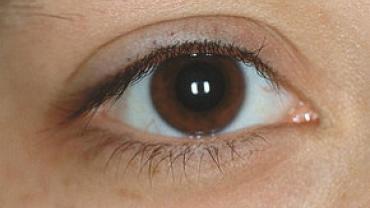
Glaucoma is a disease that directly affects the optic nerve the most important nerve of vision. The optic nerve receives light-generated nerve impulses from the retina and transmits these to the brain where the brain then translates these electrical signals into what we know as vision. Glaucoma is characterized by a particular pattern of progressive damage to the optic nerve that generally begins with a subtle loss of peripheral vision where if not diagnosed and treated it can progress to loss of central vision and blindness. The disease generally affects both eyes although one eye may have more severe signs and symptoms than the other.
It was once thought that high pressure within the eye known as intraocular pressure or IOP was the main cause of optic nerve damage but we now know that other factors are also involved since even people with normal levels of pressure can experience vision loss from glaucoma.
Two Types
While there are several permutations of glaucoma there are primarily two basic forms. Primary open angled glaucoma is the most common form and affects about three million Americans. In primary open angle glaucoma the drainage angle formed by the cornea and the iris remain open but the drainage channels in the angle are partially blocked which makes the fluid drain out of the eye too slowly. This causes fluid to back up in your eye and pressure gradually increases within it. This can occur without attendant pain or other symptoms therefore sneaking up on the sufferer without notice.
The other form of glaucoma called closed angled glaucoma occurs when the iris bulges forward to narrow or block the drainage angle. As a result fluid cannot adequately flow through and exit your eye and your eye pressure may increase abruptly. Closed angle glaucoma usually occurs suddenly with the patient commonly experiencing the rapid onset of severe eye pain headache nausea vomiting blurred vision and possibly rapidly diminishing eyesight.
Risk factors can include age (over 45) ethnic background (African Americans have a significantly higher incidence rate than Caucasians) familial history of glaucoma and other medical conditions (diabetes and hyperthyroidism).
Diet and Nutrition
While it appears that for some glaucoma risk could potentially be very great not surprisingly a diet high in fruits and vegetables has been shown like in many disease processes to reduce the risk of developing glaucoma. One study even demonstrated that consumption of eggplant of all things was shown to actually decrease intraocular pressure by a full 25 percent displaying some promising therapeutic properties.
A variant of high IOP-generated glaucoma called normal tension glaucoma (NTG) is as the name implies a type of glaucoma that occurs in those that have normal to near normal intraocular pressure. In those with this type of vision loss the use of ginkgo biloba extract has been shown to improve the damaged field of vision in some patients. This perhaps may be related to ginkgo's ability to improve blood flow.
As blood flow deficits may be one of the causative/risk factors increasing the chances of developing glaucoma it may not be coincidental that an omega-3 fatty acid deficiency exists in this population of patient. Omega-3 fatty acids remember can positively impact and improve blood flow while its deficiency can have the opposite effect.
Finally as unstable ocular blood flow can lead to the induction of oxidative stress (OS) high levels of generated OS can have serious damaging effects on delicate eye tissues and associated anatomy. Use of antioxidants may be an important therapeutic tool in combating OS while helping to improve blood flow to the surrounding tissue.
Glaucoma may not have to be an eventuality if proper supplementation and an awareness of optimal nutrition are followed in those at risk for this condition.
Michael Fuhrman D.C.